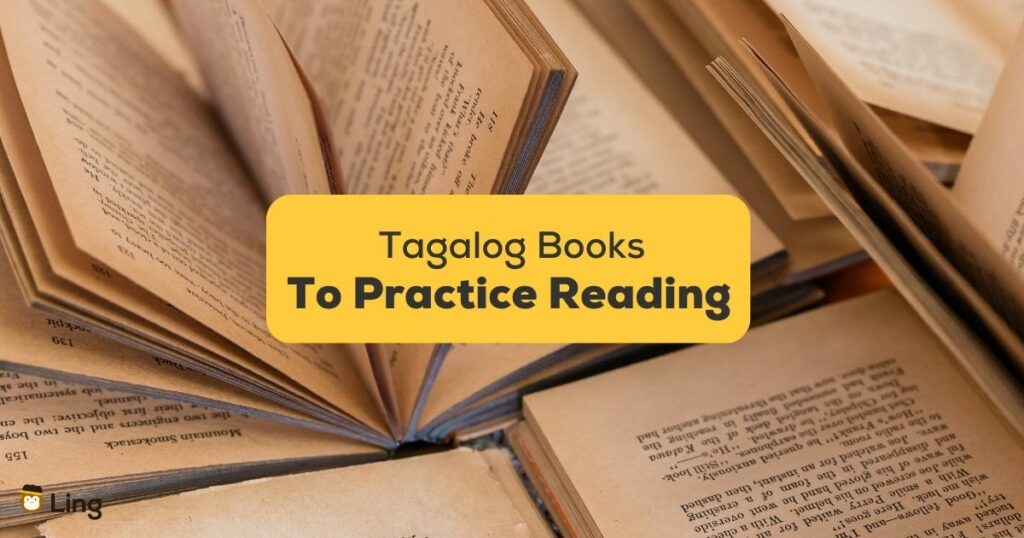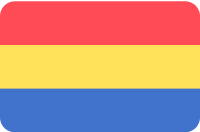Have you ever tried reading Tagalog books? If you’ve been practicing the language with little or no progress, engaging with reading materials, like books, would be beneficial to become familiar with word usage and sentence construction.
You see, reading or pagbabasa enriches your language skills by exposing you to a variety of language structures, key grammar concepts, and new vocabulary. When combined with regular speaking practice, you’ll become proficient in the language you’re learning in no time. To kickstart your journey toward improving your Tagalog skills, I will list the best books you should get your hands on right away.
Importance Of Reading Books

Here are the top reasons why reading books is the most effective approach for learning a foreign language, including Tagalog:
- Visual cues aid memory
Information presented graphically is better retained by the brain. Reading provides these visual cues as it demonstrates words and their accompanying images, which helps in memory recall.
- Learn the rules
Native speakers often take grammar and stylistic standards for granted; some may not even be aware of them. When you listen to them, you’ll notice that grammar norms are occasionally broken in interesting ways, highlighting the language’s diversity through exceptions. Reading will help you spot such norms, which you can practice to tweak in everyday situations to sound like a native speaker.
- Attack the language from all angles
Relying solely on one learning source won’t allow you to connect the dots and understand the bigger picture. To develop lingo mastery or a comprehensive understanding of a language, read, speak with Filipinos who are native speakers, and engage in various language-related activities.
- Richer language in books
Compared to spoken language used in real-life conversations, written language, and literature offer a more detailed and subtle way of expression. The spoken language might be vague and lack the same level of attention. Writers carefully select their words to give their writing depth and texture.

The Best Tagalog Books To Help You Master The Language
Now that you know how reading can help you in advancing your skills in speaking and comprehending a new language, let me present you a list of excellent books that can help in your quest to speak and understand Tagalog better:
Children’s Books
You can read Tagalog children’s books and stories regardless of your age, especially when you are just beginning to learn the language. These books are shorter, use simple words and sentence constructions, and have pictures accompanying each page.
Find books and stories that are written in Tagalog with English translations. This way, you can check if you’ve understood the message correctly as you advance in the story.
Here are some children’s books you can read to learn more Tagalog words, get an idea how native Tagalog speakers sound like, and speed up the learning process of understanding Tagalog grammar and the Filipino language:
Filipino Friends
Author: Liana Romulo
This book takes readers on the journey of a Filipino-American boy as he visits the Philippines for the first time. It is filled with captivating illustrations labeled accordingly in English and Tagalog, providing a deeper understanding of the Tagalog language, Filipino songs, Filipino food, Filipino culture, traditional attire, and festivities.
Farmer Duck (“Patong Magsasaka”)
Author: Martin Waddell
This dual-language picture book, written in English and Filipino, tells the story of a duck owned by a lazy farmer. The duck had to do all the hard work until a turning point came when the other animals on the farm decided to take matters into their own hands!
Instructional Books
These books will guide you with the correct grammar and usage of the language you’re learning. You’ll pick up new words and phrases while understanding their English meanings. They are meant for those who are dedicated to improving their language comprehension and improving their communication skills:
Tagalog For Beginners: An Introduction To Filipino, The National Language Of The Philippines
Author: Joi Barrios
Joi Barrios, a teacher, crafted this book to make it easier for learners to efficiently learn Tagalog and speak faster. You will gain the confidence to utilize the language in a variety of real-life situations through professionally designed explanations, lively conversations, cultural insights, and interactive activities.
Additionally, the book provides downloadable online audio recordings to reinforce pronunciation and develop listening comprehension.
Intermediate Tagalog: Learn To Speak Fluent Tagalog (Filipino), The National Language Of The Philippines
Author: Joi Barrios
After completing Joi Barrios’s first book about learning Tagalog, you can advance your skills by reading its continuation. This book is designed for readers who are already comfortable with the foundational concepts of Tagalog. It helps you polish your grammar and become more fluent in speaking the language.
History Books
To understand the language’s context, it is best to equip yourself with knowledge about the history and culture of its origin, in this case, the Philippines.
An Introduction To Philippine History
Author: Jose S. Arcilla S. J.
This book is an invaluable resource for learning about the significant turning points in Philippine history. Its concise narrative unfolds as an entertaining story that guides readers through the key turning points in the formation of the Philippines rather than merely serving as a reminder of dates.
You will find more titles of books that can help you become more fluent in Tagalog here. Meanwhile, you can up your game by learning how to greet happy birthday in Tagalog by clicking this link.
Use The Ling App As Your Companion When Reading Tagalog Books
The Ling app is a user-friendly language translator and tutor all in one. It makes learning a new language, including Tagalog, a breeze with its interactive activities and games. Additionally, you can use it to translate words you may find challenging while reading the books listed above.
Get the app now, available on Play Store and the App Store.



































































